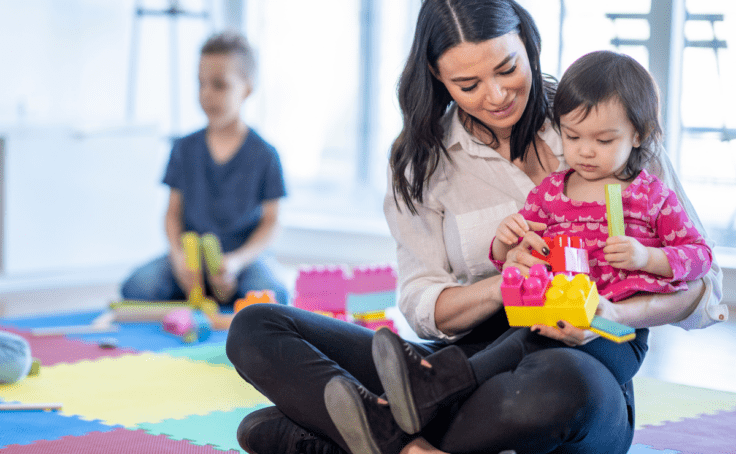Excellent educators are intentional.
To help develop your skills, consider our current offering of ZERO TO THREE Critical Competencies for Infant-Toddler Educators™

Dual language (or multilingual) learners are young children who are learning two or more languages at the same time. They now account for approximately one-third of all children from birth to age 3 in the United States, so it’s likely that you’re encountering more young multilingual learners in your early childhood education (ECE) program.
We know about the many benefits of multilingualism — including improved cognitive ability and social-emotional development — but you may be wondering what your role is as an infant-toddler educator.
Here are five ways early childhood educators can support dual language learning in early childhood:
Children are born with a strong drive to communicate, and when they feel safe with you they will use whatever communication strategies they can. If they are not getting their message across with a particular strategy, they will try a different method. As educators, you can watch out for these attempts, which may be verbal (sometimes incorporating what they know of their home language) or nonverbal (gestures, sign language). You can respond to these attempts in kind; taking time to learn common words or phrases in a student’s home language will encourage communication and send the message that understanding one another is important to you.
Incorporating words and phrases from a child’s home language into daily experiences also facilitates understanding of the connections between languages. In addition to using words from the home language one-on-one, you can incorporate these words into your group’s routine. Consider introducing words or numbers during caregiving routines, or having children greet each other in their home languages. Not only does this show the children that there are multiple languages in the world, but it fosters a sense of community and belonging for multilingual learners.
Working closely with families is crucial for supporting dual language acquisition. Success in learning multiple languages is linked to the quantity and quality of meaningful interactions in each language. For infants and toddlers, this is an especially vital time for language acquisition due to what we know about the developing brain. Babies are born with the neural connections to hear every possible phoneme in every language. The connections for phonemes that are not being heard will start to wither away through a process called neural pruning. However, a baby who hears phonemes — even from multiple languages — will learn to produce those language sounds when they start speaking. That’s why it’s so important to coordinate this effort with families, and why parents and other caregivers should continue to expose their children to rich and descriptive interactions in the home language. Working together, educators and families can ensure that dual language learners develop expressive and receptive vocabulary in both languages.
Another great way to support dual language learners is to invite family members into your ECE program to share their home language and cultural traditions. Creating a welcoming environment and reaching out to families early in the year sets a good stage for this. Bringing in family members can be especially beneficial if you have children from various linguistic backgrounds in your program, as it may not be possible for you to become familiar with multiple languages yourself. Whether it’s for storytime, music, or a holiday celebration, all children will benefit from exposure to multilingual and multicultural backgrounds.
Perhaps the most important way in which you can support dual language learners is to celebrate multilingualism as a strength — one that benefits not only the dual language learning child, but all children and society at large. Knowing that learning multiple languages conveys benefits in areas like academic success, social-emotional development, and even economic outcomes, you can be more intentional in your supports. When you work with families to develop a coordinated plan, and are thoughtful in how you incorporate home languages and cultures into the curriculum, you can provide better opportunities and outcomes for your students. Making it clear that all students and languages are valued contributes to a greater appreciation of multilingualism and diversity.
Adapted from the ZERO TO THREE Critical Competencies for Infant-Toddler Educators™, Critical Connections Leaflets Set Area 3 Supporting Language and Literacy Development, and the Critical Competencies for Infant-Toddler Educators™ Online Micro-Course, Area 3.

Excellent educators are intentional.
To help develop your skills, consider our current offering of ZERO TO THREE Critical Competencies for Infant-Toddler Educators™

|
2025 LEARN Conference registration is now open! Join us in Baltimore Oct. 8-9.
|